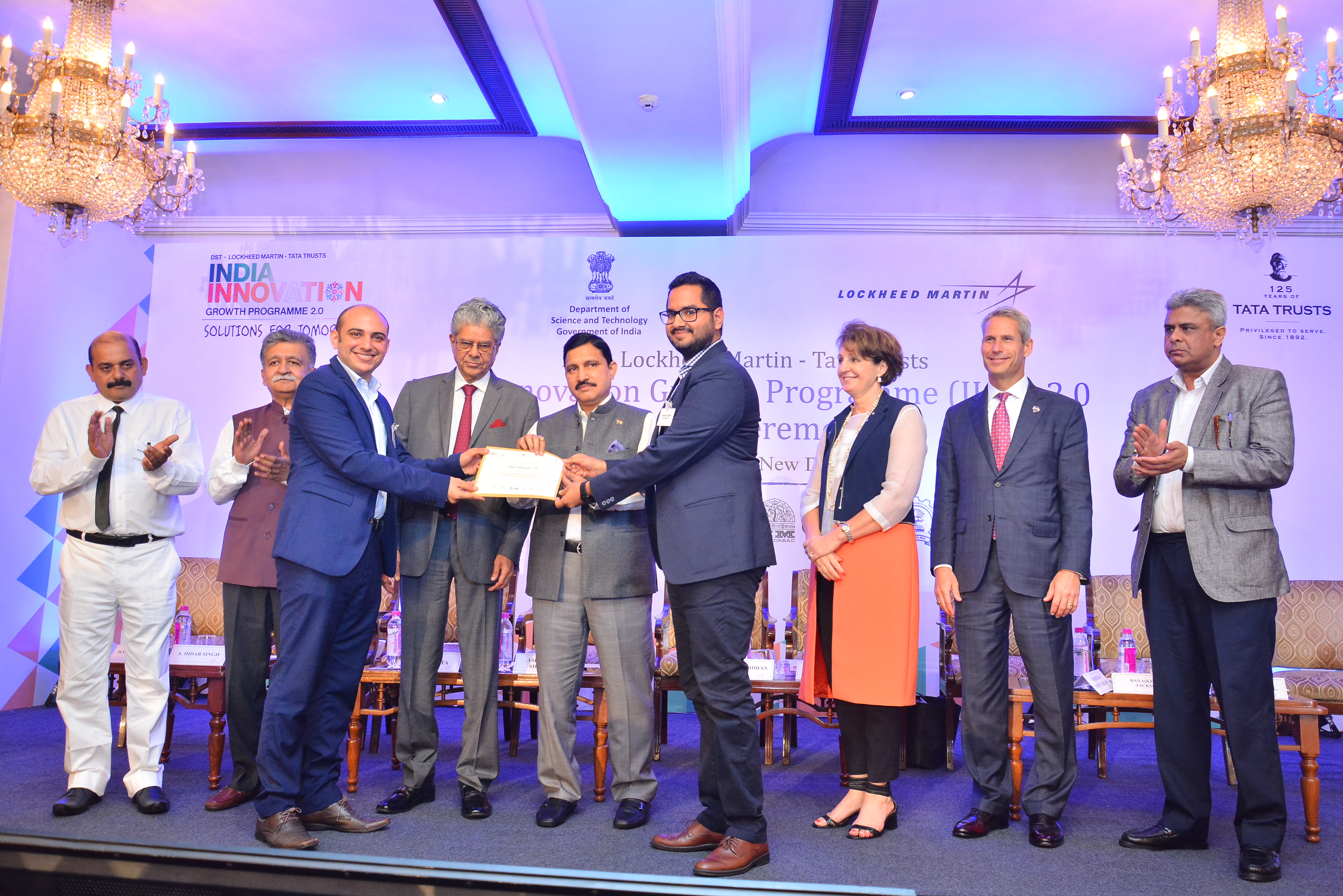Nanobinoids is a California-based company working in the fascinating and promising fields of nano-materials. Nano-materials are all those materials smaller than 100 nanometers (a nanometer is one billionth of a meter), and these substances have the potential to be used in applications as diverse as electronics and batteries. Up until this point, the barrier that has prevented even greater adoption of nano-materials in industry and commerce has been not finding creative uses for them, but rather producing the materials affordably in the first place.
Nanobinoids has worked to solve this production problem by developing Nano-materials from agricultural fibers, ensuring a more sustainable and scalable supply chain. The result of their work is Birene, a Nano-carbon with properties like strong conductivity and high energy density.
I reached out to Nanobinoids co-founder and lead director Jahan Pestonjamas to learn more about Birene, its potential uses, and Nanobinoids’ blending of agriculture and nanotechnology.
What are the origins of Nanobinoids?
Jahan Pestonjamas: Nanobinoids first began as an idea originating from its parent enterprise – Bombay Hemp Company (a private limited company based in India). The idea was to explore methods and means by which agricultural bio-mass waste from crops such as hemp could be upscaled into high value, innovative applications that are focused on resolving some of the globe’s biggest problems across domains such as energy, water, health, etc.
The first steps were taken through the commissioning of a research project with an Indian university to understand whether the hurd and bast fiber/stalk from natural growing Indian hemp could be synthesized into an activated carbonaceous nano-material with promising physical and electro-chemical properties (on par with conventional materials such as graphene and activated carbon) – which could eventually be integrated into energy storage devices such as ultracapacitors and batteries, as well as ancillary industry segments such as water desalination, air purification devices, smart textiles, and nanoparticles for drug delivery.
Upon successful completion of research and initial prototyping, our team believed that the next step forward should revolve around the growth and evolution of Nanobinoids’ in mature industrial ecosystems for nano-materials in North America.
 In the Photo: Nanobinoids co-founder Jahan Pestonjamas. Photo Credit: Nanobinoids.
In the Photo: Nanobinoids co-founder Jahan Pestonjamas. Photo Credit: Nanobinoids.
Nanobinoids’ business revolves around nano-carbons. What are nano-carbons, and what potential benefits could they have on industry and society?
JP: In essence, nano-carbons are carbon-based materials whose constituents are made up of nanoscale dimensions (with varying technical properties dependent upon its application), or which are produced by advanced nanotechnology processes.
There exist several categories of bio-based and lab-based nano-carbons, which include:
- Fullerenes: A powerful anti-oxidant that enhances skin absorption and helps fight dark spots/wrinkles. It’s utilized in the high value cosmetics industry, as well as drug delivery vehicles due to its strong drug adsorbent potential. It’s also currently being explored for research on malignant cancerous tumors.
- Carbon nanotubes: Can act as antennas for radios and other electromagnetic devices. Conductive CNTs are also used in brushes for commercial electric motors. Because of the carbon nanotube’s superior mechanical properties, many structures have been proposed ranging from everyday items like clothes and sports gear to combat jackets and space elevators.
- Graphene/graphene oxide: Can be used for hydrogen production without platinum. They can also be used for lithium-ion batteries that recharge faster. These batteries use graphene on the surface of the anode surface.
- Activated carbon: It is used in metal finishing fields and for purification of electroplating solutions. It’s also used to treat poisonings and overdoses following oral ingestion.
Nanobinoids produces Birene nano-carbons from natural fibers. Could you talk more about that process, and how it compares to other methods of production?
JP: Nanobinoids utilizes a proprietary process for the carbonization and activation of the hemp fiber, as well as the synthesis and structural characterization of Birene – activated nano-carbon in powder or sheet form.
Compared to conventional processes for creating activated nano-carbons from bio/agro-based sources, which consume copious amounts of water/gases for carbonization and activation, Nanobinoids employs unique sub-processes to ensure the efficient and economic utilization of indigenous resources in order to provide high quality material on par with conventional nano-carbons available in the global market today.
The end result of this process is Birene–an activated carbon nano-material with promising electrochemical and technical qualities such as surface area, capacitance, bulk density, and conductivity.
 In the Photo: Nanobinoids co-founders Sanvar Oberoi and Jahan Pestonjamas. Photo Credit: Nanobinoids.
In the Photo: Nanobinoids co-founders Sanvar Oberoi and Jahan Pestonjamas. Photo Credit: Nanobinoids.
Nanobinoids is also a part of Singularity Labs, how has that partnership impacted the company?
JP: Nanobinoids’ incubation at Singularity Labs has been a tremendous support system towards the growth of the company’s vision. Earlier this year, a team of two Nanobinoids co-founders attended a two-month long accelerator program at Singularity Labs. This provided a world of opportunities focused around establishing an ecosystem for the experimentation and commercial application of Birene. Through Singularity Ventures’ robust global network, our team received significant exposure across a realm of stakeholders including research institutes, universities, Fortune 500 companies, innovators, entrepreneurs, VC/PE funds, product development specialists, regulatory experts, and strategically decisive experts in the realms of nanotechnology/nano-materials.
Beyond the connections to essential networks, the expert faculty/mentors at Singularity Labs provided extensive support through insight on the ability to commercially scale radically innovative ideas without compromising the essence of product quality. Our team was offered comprehensive access to knowledge and information on unique business models, which was accrued by Singularity’s resources over the course of time.
Combined with inter-entrepreneurial interaction between other similar innovators, the two-month period at Singularity sought to ensure Nanobinoids’ received a firm base of support towards its growth-driven mission and vision.
 In the Photo: Nanobinoids co-founders Sanvar Oberoi and Jahan Pestonjamas receiving a Jury Appreciation award at the India Innovates Growth Programme in 2017. Photo Credit: Nanobinoids.
In the Photo: Nanobinoids co-founders Sanvar Oberoi and Jahan Pestonjamas receiving a Jury Appreciation award at the India Innovates Growth Programme in 2017. Photo Credit: Nanobinoids.
What does the future of Nanobinoids look like in your eyes?
JP: Nanobinoids Inc.’s core vision is centered around a synergy between agriculture and nanotechnology in developing countries like India – by growing and developing the next generation of agro-based nano-materials for their application in high value industries.
With Birene as the first generation of Nanobinoids’ product line, we aim to first harness the potential of it for energy storage and purification industries. Over the course of the next few years, we aim to diversify our product line to include nano-materials derived from other crops (sugar, rice, kenaf, bamboo, etc.) with an aim to resolve macro-problem areas for pivotal industries within the domains of smart textiles, heavy machinery, space flight, defense systems, and drug delivery mechanisms.
Through this linkage between agriculture and nanotechnology, we aim to drive direct socio-economic impact on the lives of 500,000 farmers and an indirect impact on the lives of 200,000 rural community stakeholders across ancillary industries over the next 10 years, aiming to help 50,000 farmers make their way above global/national poverty lines in the next 10 years.



 In the Photo: Nanobinoids co-founder Jahan Pestonjamas. Photo Credit:
In the Photo: Nanobinoids co-founder Jahan Pestonjamas. Photo Credit:  In the Photo: Nanobinoids co-founders Sanvar Oberoi and Jahan Pestonjamas. Photo Credit:
In the Photo: Nanobinoids co-founders Sanvar Oberoi and Jahan Pestonjamas. Photo Credit:  In the Photo: Nanobinoids co-founders Sanvar Oberoi and Jahan Pestonjamas receiving a Jury Appreciation award at the India Innovates Growth Programme in 2017. Photo Credit:
In the Photo: Nanobinoids co-founders Sanvar Oberoi and Jahan Pestonjamas receiving a Jury Appreciation award at the India Innovates Growth Programme in 2017. Photo Credit: 






